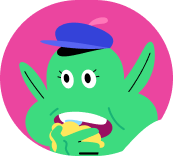CBT
Cards (6)
- CBT aims to identify and alter negative and irrational beliefs and expectations and to alter dysfunctional behaviours that may be contributing to the depression. It is assumed as part of CBT that successfully challenging the patient's irrational thoughts is of crucial importance if recovery from depression is to occur. There are two parts to the treatment: One targeting cognition, C, and one targeting behaviour, B.
- CBT was developed by Beck and is based on his theory of depression. the idea behind Beck's CBT is to identify the automatic thoughts about the world, self and future.
- Thought catching is when the therapist helps the client identify faulty negative beliefs they suffer from. This is done through discussions about experience and thoughts. Through homework assignments where the client is asked to record daily thoughts and events
- Thoughts are challenged through discussion. The therapist demonstrates the negative effects of beliefs and uses evidence to start dispelling them. The client, as homework, may work as a scientist and conduct reality testing to test the validity of the negative beliefs.
- Then they do cognitive restructuring and replace negative thoughts with positive, constructive ones. This helps reduce the impact of negative automatic thoughts (NATs) and replace with positive thoughts to alleviate symptoms of depression
- Behavioural activation tackles the behavioural part. A characteristic of many depressed people is that they no longer participate in activities that they previously enjoyed. During CBT the client and therapist identify potentially pleasurable activities and to overcome any obstacles in carrying them out. They are then given graded homework assignments which allow them to experiment with the chosen activity and then engage in progressively more rewarding activities
